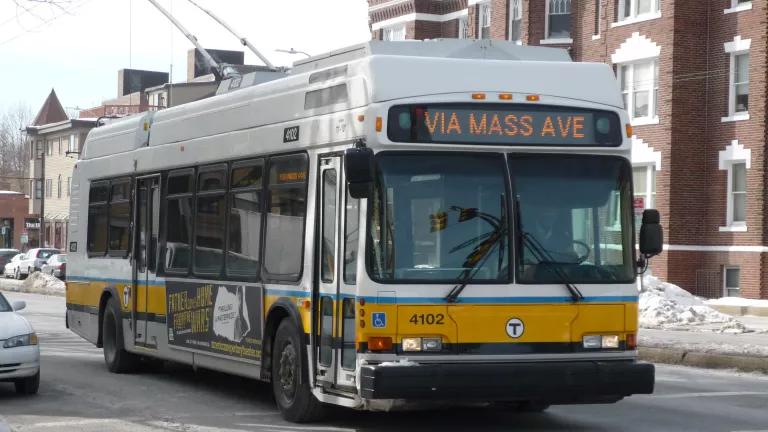Nuclear Power and Pennsylvania's Competition Act
Although it’s less well-known than the Alternative Energy Portfolio Standards Act of 2004 (AEPS), Pennsylvania’s 1996 Electricity Generation Customer Choice and Competition Act may be the state’s most important energy law. Legislators are currently focused on amending the AEPS to establish subsidies for nuclear power. But understanding the Competition Act is critical to understanding why nuclear plants are struggling economically in the first place—and why Pennsylvania is building so much new natural-gas-fired power, despite the carbon pollution it produces. The answer lies in the flawed rules of competition that govern the state's power sector.
NRDC’s recent letter about nuclear legislation to Pennsylvania legislators discusses the Competition Act in a footnote. This blog takes up that discussion at greater length.
The Competition Act “restructured” Pennsylvania’s electric power industry by separating electricity generation and electricity distribution into separate businesses. It was part of a wave of regulatory reform that sought to introduce competition in various utility functions after the end of the Cold War, following "what was seen as the successful economic deregulation of many other industries, including airlines, railroads, telecommunications, gasoline retailing, and the production of oil and natural gas." Restructuring is sometimes also called "deregulation."
Before the Act, Pennsylvania’s electric utilities were “vertically integrated,” meaning that they both (1) built and operated power plants and (2) distributed electricity to homes, businesses, and factories. Utilities had a monopoly on both functions (subject to oversight by the state Public Utility Commission), and when a utility wanted to build a power plant, it had to get approval from the PUC. The point of PUC review was to ensure that construction of the plant was "prudent," since the cost of building the plant would be reflected in the price of the utility's electricity, and customers had no choice but to buy that electricity.
The Competition Act was based on the premise that while electricity distribution—essentially, building and operating poles, wires, and substations—is a “natural monopoly” that can be performed most efficiently by one company under PUC supervision, a competitive market could be established for electricity generation, and that this would lead to increased efficiency (i.e., to lower prices for consumers). Accordingly, the Act made three major changes to Pennsylvania’s electricity system.
First, the Act forced utilities out of the generation business, requiring them to spin off their power plants and become “electricity distribution companies” (EDCs) whose main job is to maintain distribution infrastructure, design rates, manage bills, and run assistance programs for Pennsylvania's many payment-troubled customers. These functions, along with the programs to help customers use energy more efficiently, are what the PUC supervises today.
Second, the Competition Act created a “retail” electricity market where customers can buy electricity generation from any qualified “electric generation supplier” (EGS) they choose, and EGS (including both companies that own power plants and marketers that buy power and re-sell it to customers) are allowed to market different generation “products” to customers. When customers don't shop, "default suppliers" (usually, EDCs) buy electricity for them under rules in the Competition Act.
Third, the Competition Act effectively outsourced planning for Pennsylvania’s electricity generation sector to PJM Interconnection, LLC, the Montgomery-County-based regional transmission organization (RTO) that runs the electricity grid in Pennsylvania, 13 other states, and the District of Columbia, under the regulation of the Federal Energy Regulatory Commission (FERC). Under the Federal Power Act (FPA), PJM's job is to manage the electricity system and ensure its reliability. PJM does this in part by creating and designing “wholesale” electricity markets that determine what power plants are generating electricity at any given time, as well as the price of that electricity. So far, so good. Increasingly, however, PJM is designing its markets so that they effectively choose the types of power supply—usually gas—serving Pennsylvanians, something the FPA never intended.
The struggles of nuclear power to remain economical in Pennsylvania are largely due to a profound design flaw in PJM's markets: the fact that they don’t account for the climate impacts of carbon pollution from power plants that burn coal and gas. (While coal produces more carbon pollution than gas, gas-fired power plants emitted 24.20 million tons of carbon dioxide in Pennsylvania in 2015, and several new gas plants have been built since then). If the markets did price carbon pollution—something that PJM has explored, but never acted on - companies emitting it by burning coal and gas would have to pay for it. That would make non-emitting power sources, including both renewables and nuclear, more competitive. Renewables more than nuclear, since they are getting increasingly inexpensive, especially in states that support long-term contracts between renewables and utilities. (Although Pennsylvania's Competition Act requires that utilities buy power for non-shopping customers through a “prudent mix” of long- and short-term contracts and purchases on PJM's markets, in practice the PUC allows utilities to buy all of their power on PJM’s markets).
Capping carbon pollution—for example, by joining the Regional Greenhouse Gas Initiative, or RGGI—would be another way for Pennsylvania to create fairer competition between emitting and non-emitting generation. This would entail putting a declining cap on emissions, requiring plants that emit carbon pollution to buy “allowances” for it while investing the revenue in energy efficiency, energy assistance for low-income populations, and other uses determined by policymakers, and making those allowances tradeable on carbon markets.
Markets can be an extremely effective way of cutting pollution. In the 1980s, Pennsylvania had the worst acid rain in the U.S., mainly because of sulfur dioxide pollution from coal-fired power plants. Then President George H.W. Bush proposed the nation’s first major market-based environmental law, a cap-and-trade program. It was a huge success, cutting emissions faster and cheaper than expected.
But markets can't be counted on to cut pollution unless they're directed to cut pollution. In recent years, PJM’s markets have facilitated a switch from coal-fired generation to gas generation in Pennsylvania. This has lowered emissions of carbon dioxide from the power sector, and that has led some to claim that simply having markets is a "market-driven energy solution." But the decline in emissions that we've seen has been incidental to—not caused by—the design of PJM's markets. That is, it's a result of gas being cheaper to burn than coal for reasons other than their respective carbon contents. Now, those same markets are impeding the development of renewables, as well threatening to drive nuclear power offline. And they could get worse.
Policymakers who want to help their communities, economist Mariana Mazzucato recently observed, often "think the way to do so is to put more trust in market mechanisms, with policy just a matter of tinkering at the edges." But competitive markets are always outcomes of "interactions between different actors in the economy, including government;" government policy is an essential part of the process that co-shapes and co-creates markets, and it's the job of government to “fashion markets in ways that produce desirable outcomes." In a rapidly warming world, few outcomes are more important than the growth of an equitable green economy. Pennsylvania’s current policy—prostration to flawed PJM markets, the absence of any cap on carbon, and weak renewables and efficiency goals—doesn’t do that. That needs to change.



